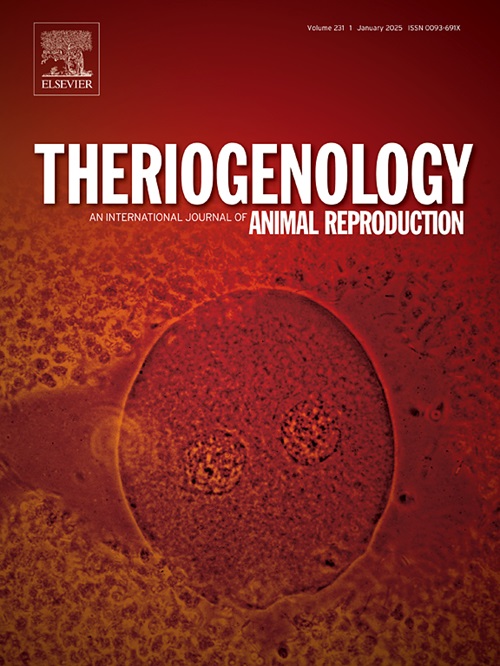功能性COPA在牛的早期胚胎发育中是不可缺少的,除了主要的基因组激活
IF 2.4
2区 农林科学
Q3 REPRODUCTIVE BIOLOGY
引用次数: 0
摘要
胚胎基因组激活分为向内源性转录过渡的小波和大波。在牛中,次要的基因组激活在2细胞阶段早期开始,并在8细胞阶段完成,此时主要基因组激活成为主导。虽然已知调节早期发育的基因的激活已经被广泛研究,但涉及更多中枢细胞功能的基因尚未被研究。利用CRISPR Cas9系统,本研究研究了敲除高尔基逆行蛋白转运体COPA对早期牛发育的影响。Cas9核蛋白靶向COPA外显子6的假设受精卵电穿孔后,2细胞(11%)和4细胞(16%)胚胎序列显示COPA敲除,而8细胞胚胎和囊胚则没有,这表明COPA是发育到8细胞阶段及以后的必要条件。使用含有靶位点沉默突变的修复模板,在5个囊胚中观察到COPA野生型缺失,模板成功敲入至少一个等位基因。这表明经过编辑的功能性COPA拷贝可以保存胚胎的发育能力,并表明Cas9在靶区的活性本身并不是导致功能丧失的原因。总之,本研究揭示了COPA对胚胎发育是必要的,并且这种必要性的时间是在主要基因组激活开始之前。更一般地说,这项研究进一步证明了基因组编辑在生殖生物技术中对基因功能和早期胚胎发育的询问的效用。本文章由计算机程序翻译,如有差异,请以英文原文为准。
Functional COPA is indispensable for early embryo development beyond major genome activation in bovines
Embryonic genome activation is divided into a minor and a major wave of transition to endogenous transcription. In bovines, minor genome activation begins early in the 2-cell stage and is completed by the 8-cell stage when major genome activation becomes dominant. While the activation of genes known to regulate early development have been studied extensively, genes involved in more central cellular functions have not been examined. Taking advantage of the CRISPR Cas9 system, the present study investigated the effect of knocking out the Golgi retrograde protein transporter COPA on early bovine development. After the electroporation of presumptive zygotes with Cas9 ribonucleoproteins targeting COPA exon 6, sequences of 2 (11 %) and 4-cell (16 %) embryos showed knockouts of COPA whereas 8-cell embryos and blastocysts did not, demonstrating that COPA is necessary for development to the 8-cell stage and beyond. Using a repair template containing silent mutations along the target site, COPA loss of wildtype was observed in 5 blastocysts, with successful knock-in of the template on at least one allele. This shows that an edited yet functional copy of COPA can save the developmental capacity of the embryo and demonstrates that Cas9 activity at the target region itself is not responsible for the loss of function. Together, the present study revealed that COPA is necessary for embryonic development, and that the timing of this necessity is before major genome activation onset. More generally, this study further demonstrates the utility of genome editing within reproductive biotechnology for the interrogation of gene function and early embryonic development.
求助全文
通过发布文献求助,成功后即可免费获取论文全文。
去求助
来源期刊

Theriogenology
农林科学-生殖生物学
CiteScore
5.50
自引率
14.30%
发文量
387
审稿时长
72 days
期刊介绍:
Theriogenology provides an international forum for researchers, clinicians, and industry professionals in animal reproductive biology. This acclaimed journal publishes articles on a wide range of topics in reproductive and developmental biology, of domestic mammal, avian, and aquatic species as well as wild species which are the object of veterinary care in research or conservation programs.
 求助内容:
求助内容: 应助结果提醒方式:
应助结果提醒方式:


